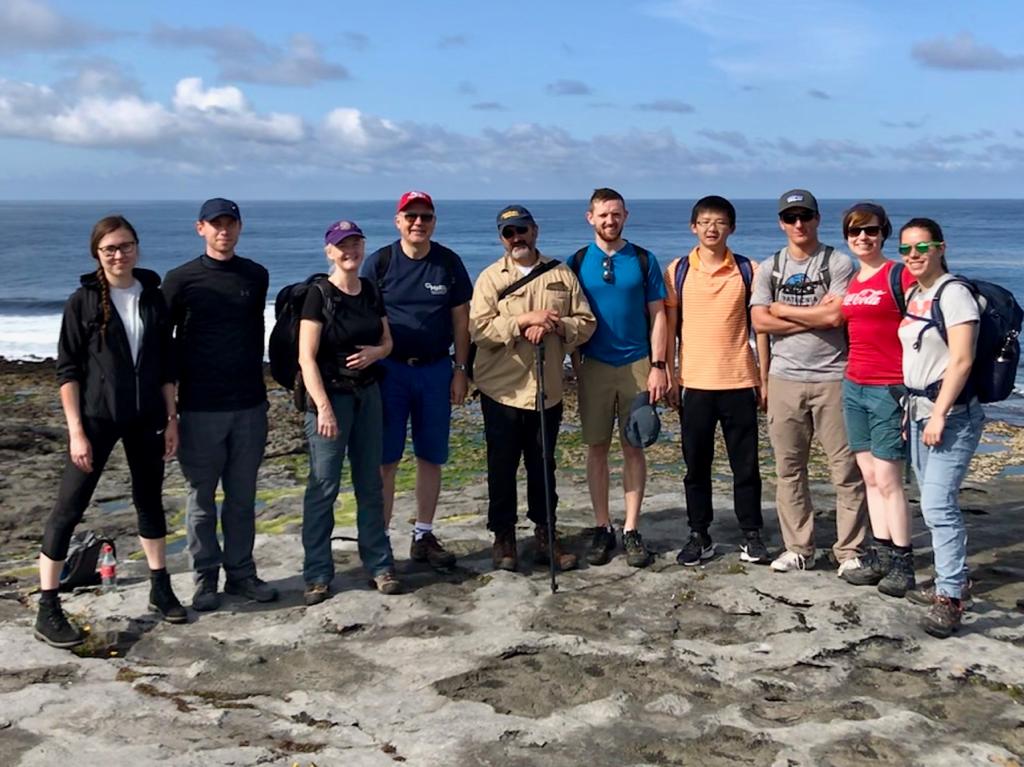Prof. Rónadh Cox, of Williams College and University College Dublin’s Earth Institute, led a field trip to coastal boulder deposits on Inishmore on August 1st 2019. Prof. Frederic Dias’ wave group joined the diverse group of geologists, geomorphologists, geographers, engineers, mathematicians and park rangers on this trip.

This field trip started in a bright and sunny morning with a short bus ride with a local driver - Tommy. During the ride Tommy told us about old fields that have been submerged under water, but the stone walls are still visible at low tide.
On the way to the coast we saw one of many rainwater collectors. Fresh water supply can be an issue on the Aran Islands. Just in June this year people of Inisheer had night time restrictions imposed for water as the storage levels were at a low. The water demand increases every summer because of the many tourists visiting the islands. There is some ground water on the island, springs can be seen all along the coast.
The benefit of having such a diverse group on the trip was realised immediately at the first stop - participants were sharing information ranging from geological background to seismological data and even forecasts of how the climate change might affect the ocean waves on planetary scale.
At the coast there are many boulder ridges as well as large individual boulders. The boulders were derived from the subjacent bedrock, shifted, overturned and strongly reorganized in the storms. Waves peel off big slabs and some of these slabs were documented to migrate inland. There is also downwearing of the platforms by an effect similar to cheese grating of those slabs grinding on the platform and chipping off small pieces.
Another impressive site visited was at a 40 ton rock, that is now positioned 13 meters high and 72 meters inland. It came from the top 3 meters of a vertical cliff and overturned in the storms of 2014, a dramatic demonstration of ocean power.
One of the aims of Prof. Frederic Dias’ HIGHWAVE project is to find the threshold for extreme wave activity leading to an irreversible morphological impact and to develop new concepts in field measurement of breaking waves. Recording events such as shifting and overturning of these large blocks by storm waves provides valuable data for the project.
Collection and transmission of data from the sea to the island and from the island to mainland will be a challenging task on its own. One of the things that makes the HIGHWAVE project so appealing is that it will require expertise in different disciplines, from mathematics, through fluid mechanics to engineering.
We would like to thank Prof. Rónadh Cox for organizing such a great trip, and everyone involved, including the locals for such a warm welcome and hope to be back on the island soon!
 Wave Group, School of Mathematics and Statistics (UCD)
Wave Group, School of Mathematics and Statistics (UCD)